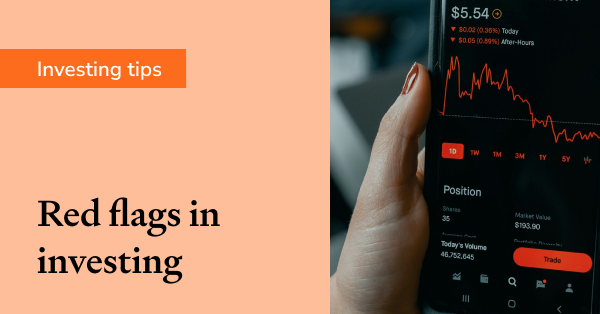3 reasons why Australian investors need to be tracking dividends
Income received from share dividends is a critical part of household income for many Australians, particularly self-funded retirees. In this age where the RBA cash rate has hit record lows with few signs of moving higher in the near future, investing in listed companies that pay dividends is one of the best places to achieve higher investment yield.
Dividend tracking might seem ‘unsexy’ compared to tracking capital growth, but dividends have a material impact on your investment returns, particularly when they include franking credits, so it’s critical to ensure you’ve got the complete picture.
Only tracking the cash you receive from dividends doesn’t go far enough. To get the full picture of the impact of dividends on your investment performance, you need to understand:
![]()
Tracking cash income from dividends
Understanding which investments cash dividends come from and how they impact your investment return is an admin nightmare. Listed companies, exchange traded funds (ETFs), and managed funds outsource the responsibility of tracking who owns shares, and who is paid dividends to share registries.
In Australia there are six different share registries. The most common ones investors will encounter are Computershare and Link Market Services. This means that to get an accurate record of dividends received across an investment portfolio, investors will often need to pull together dividend data from the web sites of multiple registries, or pour over mailed dividend statements for each holding.
For one of the holdings in my portfolio, Telstra (ASX:TLS), the registry electronically deposits cash dividends to my bank account. This is great (some companies send paper cheques instead), but even though the dividend is deposited to an account with the same institution that I use for brokerage, the broker has no visibility on the source of this cash, so they can’t calculate the dividend yield from it.
Using a dedicated investment portfolio tracker like Sharesight can help remove this admin nightmare. Sharesight sources dividend information directly from over 30 stock exchanges around the world, automatically calculating your dividend yield for each holding regardless of whether the dividend is paid electronically, or via cheque.

In Telstra’s case, over the past year, I can see that dividends accounted for over 6.25% of my total return. Not only that, but by looking back over the entire period I’ve held Telstra shares I can see every dividend received since I first bought TLS.
Dividend tax implications
Depending on the investment type and your home country, dividend income is typically taxed at the same rate as ordinary income. In Australia however, there is added complexity from dividend franking credits as well as the attribution managed investment trust tax components used by ETFs and managed funds.
Looking at the bank account the registry deposits dividends to won’t help, because you’ll only see the net amount paid. Going to the registry for the information needed to calculate dividend tax implications is a good start, but the registries fall short in two ways. One, you will likely still need to rely on multiple registries to compile a portfolio-wide tax picture. Two, they will sometimes only provide you with the most recent financial year’s data for free, charging you a fee if you need access to information from previous years.
Fortunately, Sharesight receives the same dividend and franking credit information the registries do (minus the official statements). This means that any franking credits are automatically recorded and can be used to easily calculate your taxable income on these investments.
![]()
Taking it a step further, this also means that it’s quite easy to calculate the impact of dividends on your taxes across your investment portfolio, as these figures are wrapped up into a single Taxable Income Report which breaks out non-trust from trust income, and domestic from foreign income.
The impact of dividend reinvestment
Assuming you don’t immediately need the cash income from dividends, some Australian companies allow you to automatically reinvest dividends in the company via their registry. This allows you to stay as fully invested as possible, without incurring additional transaction costs. Unfortunately, dividend reinvestment plans (DRPs) further complicate managing your investment portfolio for the following reasons.
First, because the DRP is managed by the share registry and not your broker, the broker will have no visibility into dividends that are reinvested. Second, when a dividend is reinvested, shares are ‘bought’ for you at a specific price. This means that the cost base and the amount invested is constantly changing and will have tax implications when disposing of the shares. It also makes it difficult to calculate your true performance, with any return calculations reliant on the cost base.

I use dividend reinvestment plans personally for any ETFs I own when they are available, with Sharesight able to automatically calculate the impact of dividend reinvestments on my cost base and performance figures.
How to track dividend reinvestment plans
Tracking the impact of dividend reinvestments is easy with Sharesight, find out how by watching this video.
Embedded content: https://www.youtube.com/embed/xNjBtlGVIHQ
Track the impact of dividends on your investment performance
With Sharesight’s advanced dividend tracking, dividend reinvestment support and tax reporting features, Australian investors can access unparalleled insights into their investment performance at the click of a button.
Sharesight isn't only for tracking dividends, it's the complete investment performance tracking and reporting tool, allowing Australians to:
-
Track all your investments in one place, including domestic and international stocks, mutual/managed funds, property, foreign currency and even cryptocurrency
-
Run performance reports to Calculate your portfolio Performance, Diversity and Contribution Analysis
-
Run tax reports built for Australian investors. including Taxable Income (dividends/distributions), Capital Gains Tax and Unrealised Capital Gains
-
Easily share access of your portfolio with family members, your accountant or other financial professionals so they can see the same picture of your investments as you do
Sign up for a free Sharesight account and get started tracking the impact of dividends on your investment performance (and tax) today.

FURTHER READING
IMPORTANT DISCLAIMER Sharesight does not provide tax or investment advice. The buying of shares can be complex and varies per individual. You should seek tax and investment advice specific to your situation before acting on any of the information in this article.

Announcing the Sharesight Fintech Scholarship's 2024 winner
We are pleased to announce the 2024 winner of the Sharesight Fintech Scholarship, Temiremi Egwuenu, who is studying Applied Finance at Macquarie University.

Effortlessly track clients’ trades with Sharesight and Desktop Broker
Sharesight has integrated with Desktop Broker, allowing advisers to have their clients’ trading data automatically synced to Sharesight’s portfolio tracker.

Red flags: When should you avoid investing in an asset?
This article explores some of the “red flags” you should look out for when considering an investment for your portfolio.